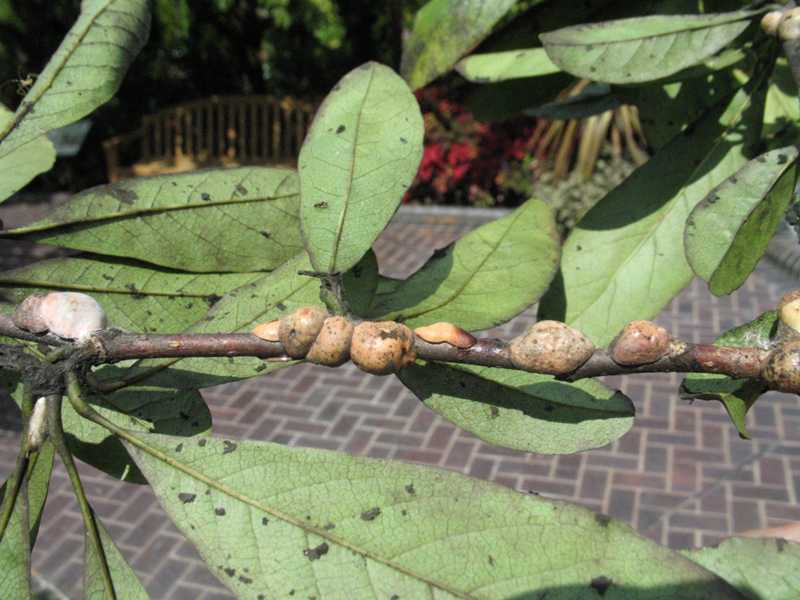

They become active in early spring, and monitoring is typically needed before leaf flush of deciduous shade trees ( 66). Both genders range in color from reddish-brown to black depending on species ( 5). Female beetles are 2–3 mm (0.08–0.12 in) in length, with males much smaller. These insects are noted as occasional pests of magnolia ( 54). Exotic ambrosia beetles, primarily Xylosandrus crassiusculus Motschulsky (granulate (formerly Asian) ambrosia beetle) and Xylosandrus germanus Blandford (black stem borer), (Coleoptera: Curculionidae), attack over 100 tree species and are among the most damaging pests of nursery-grown trees and some shrubs ( 1, 5, 17, 45, 66). magnolialis has at least two generations per year, where adult moth flight activity occurs from February through April and again from June through August ( 56, 72). In Florida and the deep southern U.S., E. As larvae mature, they migrate up toward the crown and begin tunneling beneath bark to pupate. Eggs may be deposited on the tree bark (a single female laid about 400 eggs under laboratory conditions) from the crown up to 1.5 m (~ 4.9 ft) ( 56) and larvae tunnel down to feed on tree roots. They are more of an economic threat to magnolias under nursery production, rather than in an urban landscape setting ( 56). Adult moths live approximately 10 days ( 56) and adults and larvae are often difficult to detect. Initial plant decline is induced by larval feeding that limits root function including nutrient and water uptake. Root feeding may be in a spiral pattern, causing affected roots to have a candy cane-patterned injury ( 56). The resulting girdling injury can injure and even kill nursery seedlings ( 56, 67, 72). Magnolia root borer, Euzophera magnolialis Capps (Lepidoptera: Pyralidae), is a wood boring pest with larvae that feed on 6 mm (0.2 in) and larger magnolia roots and tunnel approximately 15 cm (6 in) upward into the trunk above the crown ( 56). (= Magnolia dianica= Michelia yunnanensis), Magnolia insignis (Wall.) Blume S (= Manglietia insignis) and Magnolia maudiae (Dunn) Figlar (= Michelia maudiae), only the latter is currently produced and by just one nursery. Of the more recently introduced Asian species such as Magnolia laevifolia (Y.W. are rarely produced, each listed by a single nursery, and M. Less widely known natives such as Magnolia macrophylla Michx.

are attracting great interest but are grown by only five nurseries. New yellow-flowered hybrids derived from Magnolia acuminata (L.) L. and cultivars derived from complex hybrids of this and other deciduous species (i.e., Magnolia ‘Jon Jon’) just six nurseries produce Magnolia figo (Lour.) DC (= Michelia figo).

Only 16 nurseries produce Magnolia × soulangeana Soul.-Bod. stellata cultivars and hybrids (47 nurseries). Other species produced by many growers are Magnolia virginiana L. Magnolia grandiflora is the most widely grown (168 nurseries) because its cultivars are heavily favored for landscape use. that are widely produced by commercial nurseries in the southeastern states of Alabama, Arkansas, Florida, Georgia, Kentucky, Louisiana, Mississippi, North Carolina, South Carolina, Tennessee, Texas and Virginia ( 2). This review focuses on magnolia culture in production and landscape settings with an emphasis on major pests, plant diseases and abiotic disorders affecting management of Magnolia species.Ī 2011 review of a commercial plant locator resource identified a number of Magnolia spp. When they occur, abiotic disorders, pests or diseases on magnolia can cause significant economic or aesthetic losses. Some abiotic disorders may mimic biotic damage or may render magnolia more susceptible to pests and diseases. Magnolia health and pest management is sometimes overlooked in both landscape and production settings because magnolia is considered to have relatively few pest and disease problems. Species introductions, breeding and selection programs over the last 50 years have produced superior selections with improved flowering, new flower colors and ornamental foliage and buds often featuring brown, copper or gold indumentum. due to their beauty, utility, relative ease of maintenance and broad adaptability to the region's climate and soils.

Native and nonnative Magnolia species have become prominent landscape plants in the southeastern U.S. Magnolias are native to temperate, subtropical and tropical areas of southeastern Asia, eastern North America, Central America, the Caribbean and parts of South America. The genus, Magnolia, encompasses a group of about 240 species of evergreen or deciduous trees and large shrubs.


 0 kommentar(er)
0 kommentar(er)
